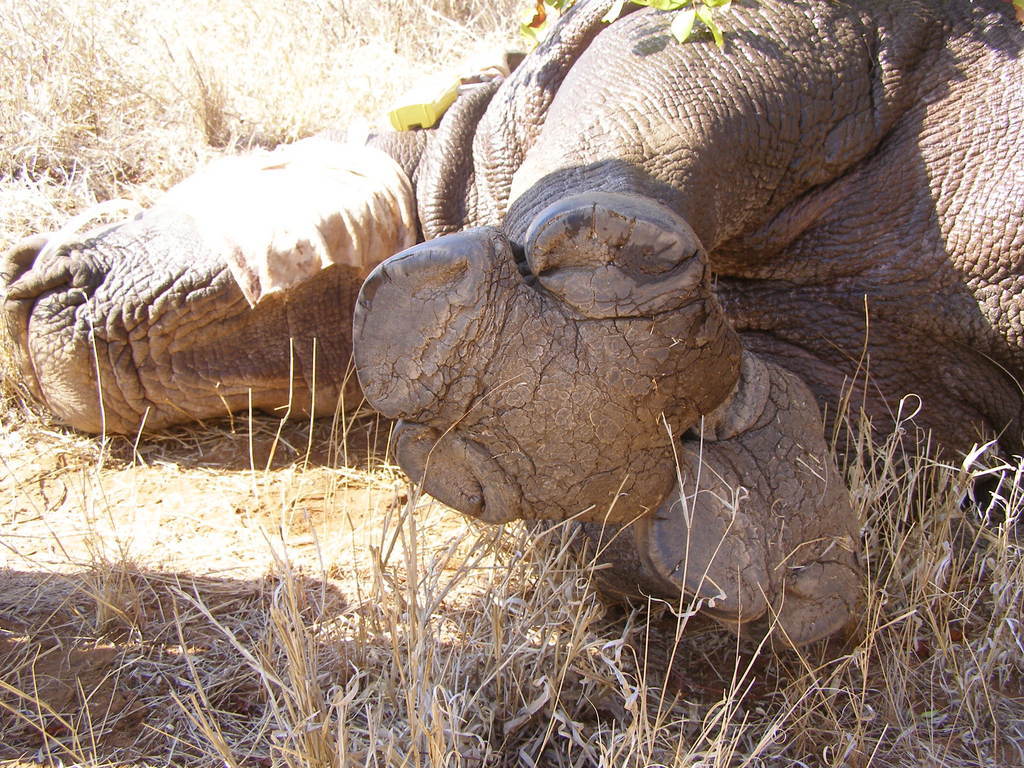Identification of black and white rhino footprints
By Natasha Anderson, Rhino Monitoring Coordinator, Lowveld Rhino Trust, Zimbabwe
Number of toes
Black (Diceros bicornis) and white (Ceratotherium simum) rhinoceroses belong to the order Perissodactyla – odd-toed ungulates. Black and white rhinos have three toes and this makes their spoor easy to differentiate from the other large footed species – elephants and hippos which both have four toes. The toes appear essentially as toenails (or claws as they are also called) with the largest one to the front of the foot and two slightly smaller ones on the sides of the foot.
Shape of foot
The overall shape of the foot for both species is quite similar especially in younger animals. The rear of the foot pad for the white rhino tends to have more of an indentation in the middle leaving the impression of a rounded “W”. Sometimes black rhino spoor can also have a slight indentation at the rear but the overall shape of the spoor will be rounded, whereas the “W” shape to the white rhino spoor tends to make the foot look slightly elongated to the heal.
Size of foot
Size is always a difficult criteria to differentiate on because most of the time you will not get a black rhino spoor conveniently placed next to a white rhino spoor to be able to compare which is larger. Adult white rhino spoor is considerably larger than blacks – the width from the outside edge of the claws across the foot measuring as much as 30cm on the front foot and 25cm on the rear. Adult black rhino spoor will normally measure about 23cm across the front foot and 20cm across the rear.
Being aware of the variation in size between the front and back feet is important as many people assume they are looking at the spoor of two different individuals when there is only one.
Below are two images of immobilised rhinos feet, showing the difference between the two species’ footprints
Black rhino foot White rhino foot
Click here to read more about the Lowveld Rhino Trust
All photos credits, Lowveld Rhino Trust









